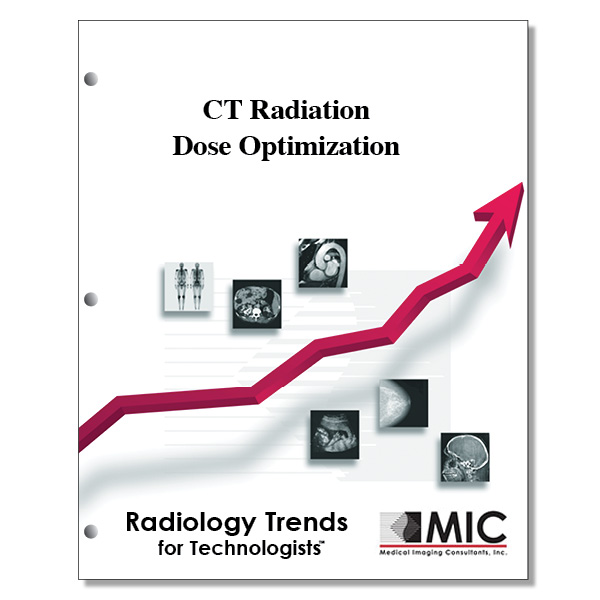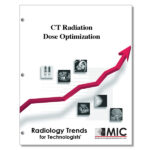

CT Radiation Dose Optimization
A review of the principles of CT radiation exposure and dose optimization through modification of scanning parameters and application of recent technologic innovations.
Course ID: Q00131 Category: Radiology Trends for Technologists Modalities: CT, Nuclear Medicine2.75 |
Satisfaction Guarantee |
$29.00
- Targeted CE
- Outline
- Objectives
Targeted CE per ARRT’s Discipline, Category, and Subcategory classification for enrollments starting after August 15, 2023:
Computed Tomography: 2.75
Safety: 2.75
Radiation Safety and Dose: 2.75
Registered Radiologist Assistant: 2.75
Safety: 2.75
Patient Safety, Radiation Protection, and Equipment Operation: 2.75
Outline
- Introduction
- CT Scanning: Data and Risk Projection
- Important CT Scanning Parameters
- Scanner Geometry
- Tube Current and Potential
- Scanning Modes
- Scanning Length
- Collimation, Table Speed, and Pitch
- Gantry Rotation Time
- Sheilding
- Radiation Dose Reduction and Judicious Practices
- Modulation of CT Parameters for Dose Reduction
- Weight
- Cross-sectional Dimension
- Literature on CT Radiation Reduction
- Chest CT Scanning
- CT in Pediatric Patients
- CT Colonography
- CT for Urinary Tract Calculi
- Technologic Advances for Radiation Reduction
- X-ray Beam Utilization
- X-ray Filtration
- Automatic Modulation of Tube Current
- Projection Adaptive Reconstruction Filters
- Computer Simulated Dose-Reduction Software
- Filters
- Conclusion
Objectives
Upon completion of this course, students will:
- understand who is responsible for radiation dose reduction in CT
- be familiar with deterministic risk of radiation exposure
- know the stochastic effects of radiation
- understand the estimated cancer risk from abdominal CT
- know how doubling patient distance from the radiation source affects radiation dose
- be familiar with the law relating radiation intensity and distance
- know how tube current is related to patient dose
- understand how reduction in tube current affects dose, image noise and image contrast
- understand how tube potential affects dose, image noise and image contrast
- know how multidetector row helical CT is related to radiation dose
- understand how dose is related to scanning length
- be familair with the ratio of table feed per rotation to beam width
- know how increased pitch affects helical artifacts, section broadening and spatial resolution
- understand how dose is related to pitch
- know how dose is related to changing the pitch
- understand when thin collimation should be used
- know the tradeoffs between image quality and reduced rotation time
- be familiar with radiosensitive organs
- be familiar with particularly radiosensitive organs
- know who clinical guidelines can be used to advise on the appropriateness of exams
- understand the role of other imaging modalities
- know which benign condition is responsible for the largest cumulative CT radiation dose
- understand what uniform imaging protocols for exams should be based on
- know what can be adjusted according to patient dimensions for dose modulation
- know what basing dose modulation on may result in large fluctuations in image noise
- understand how patient dimensions can be obtained
- know why chest CT requires less radiation than does abdominal CT
- be familiar with pediatric protocols
- be familiar with CT colonography
- know the differences between low-dose CT colonography and standard abdominal/pelvic CT
- understand how tube current for a urinary calculi exam can be reduced
- know how prepatient tracking reduces dose
- know how X-ray filtration reduces dose
- understand what can be done to harden the x-ray beam
- know what z-axis current modulation is based on
- understand why tube current is adjusted in z-axis modulation
- know what angular modulation is most effective for
- know how projection-adaptive reconstruction filters improve image quality
- understand how projection-adaptive reconstruction filters work
- be familiar with software used to simulate image quality
